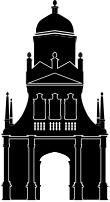Fellows and academic staff
The College’s vibrant community comprises of around 850 undergraduates and graduate students, 110 Fellows and academic staff, and almost 200 staff members.
Our students come from all over the world and our undergraduates study all the subjects offered in the University. Our postgraduates play a vital role in the research activities of the wider University.
Professor Pippa Rogerson is the Master of Gonville & Caius. The Master is the College's elected head of house with overall responsibility for all College affairs.
Our Fellows are a diverse group of professional researchers and teachers, who pool their skills and resources to run the College and make it a truly stimulating academic community. They conduct research and take responsibility for the academic and personal development of the students. The wide-ranging specialisms of our Fellows — from African history to neurophysiology, and from quantum field theory to Japanese economics — make this a genuinely cross–disciplinary community.
Other categories of Fellows (e.g. Honorary Fellows, Emeritus Fellows) - and some others involved in the teaching of our students - are included in the list below. Individual Fellows or categories may be selected using the search box and the drop-down menus below.
Fellows contactable by email can be reached using the email address on their profile.

